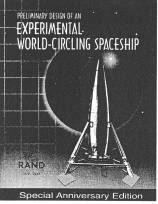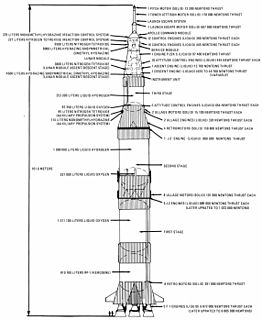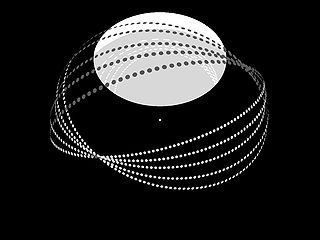 W
WNASA introduced in December 2017 a mission concept to launch an interstellar probe by the year 2069 to search for biosignatures on planets around the stars in the Alpha Centauri system. The mission concept is as yet not funded, unnamed and the technology to get there does not yet exist.
 W
WAstrochicken is the name given to a thought experiment expounded by theoretical physicist Freeman Dyson. An Astrochicken is a small, one-kilogram spacecraft, a self-replicating automaton that could explore space more efficiently than a manned craft could due to its innovative mix of technology.
 W
WA Bracewell probe is a hypothetical concept for an autonomous interstellar space probe dispatched for the express purpose of communication with one or more alien civilizations. It was proposed by Ronald N. Bracewell in a 1960 paper, as an alternative to interstellar radio communication between widely separated civilizations.
 W
WThe Bussard ramjet is a theoretical method of spacecraft propulsion proposed in 1960 by the physicist Robert W. Bussard, popularized by Poul Anderson's novel Tau Zero, Larry Niven in his Known Space series of books, Vernor Vinge in his Zones of Thought series, and referred to by Carl Sagan in the television series and book Cosmos.
 W
WThe NEXUS reusable rocket was a concept design created in the 1960s by a group at General Dynamics led by Krafft Arnold Ehricke. It was intended as the next leap beyond the Saturn V, carrying up to eight times more payload. Several versions were designed, including 12,000 and 24,000 short ton vehicles with payloads of one thousand and two thousand short tons respectively. The larger version had a diameter of 202 feet. It was never built.
 W
WInnovative Interstellar Explorer was a NASA "Vision Mission" study funded by NASA following a proposal under NRA-03-OSS-01 on 11 September 2003. This study focused on measuring the interstellar medium, the region outside the influence of the nearest star, the Sun. It proposes to use a radioisotope thermal generator to power ion thrusters.
 W
WThe Preliminary Design of an Experimental World-Circling Spaceship was a 1946 proposal by Project RAND for a United States satellite program. Robert M. Salter, Jack Lipp and one other person at RAND served as the editors of the report.
 W
WProject Daedalus was a study conducted between 1973 and 1978 by the British Interplanetary Society to design a plausible uncrewed interstellar spacecraft. Intended mainly as a scientific probe, the design criteria specified that the spacecraft had to use existing or near-future technology and had to be able to reach its destination within a human lifetime. Alan Bond led a team of scientists and engineers who proposed using a fusion rocket to reach Barnard's Star 5.9 light years away. The trip was estimated to take 50 years, but the design was required to be flexible enough that it could be sent to any other target star.
 W
WProject Longshot was a conceptual interstellar spacecraft design. It would have been an uncrewed probe, intended to fly to and enter orbit around Alpha Centauri B powered by nuclear pulse propulsion.
 W
WProject Orion was a study of a spacecraft intended to be directly propelled by a series of explosions of atomic bombs behind the craft. Early versions of this vehicle were proposed to take off from the ground ; later versions were presented for use only in space. Six non-nuclear tests were conducted using models. The project was eventually abandoned for multiple reasons such as the Partial Test Ban Treaty which banned nuclear explosions in space as well as concerns over nuclear fallout.
 W
WThe Sea Dragon was a 1962 conceptualized design study for a two-stage sea-launched orbital super heavy-lift launch vehicle. The project was led by Robert Truax while working at Aerojet, one of a number of designs he created that were to be launched by floating the rocket in the ocean. Although there was some interest at both NASA and Todd Shipyards, the project was not implemented.
 W
WStellar engines are a class of hypothetical megastructures which use a star's radiation to create usable energy. The concept has been introduced by Badescu and Cathcart. Some variants use this energy to produce thrust, and thus accelerate a star, and anything orbiting it, in a given direction. The creation of such a system would make its builders a Type-II civilization on the Kardashev scale.